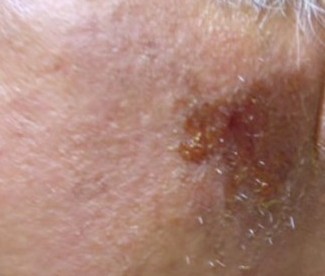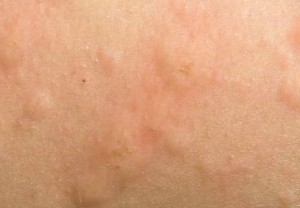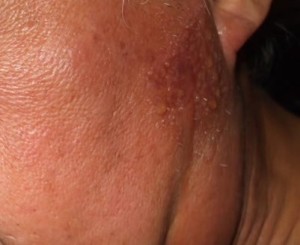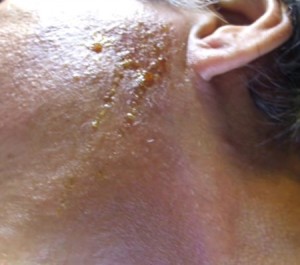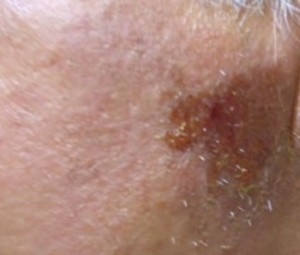A chlorine rash affects people when they are exposed to chlorine, and it is at times referred to as swimming pool rash. People experience this kind of rash after they have been in a swimming pool where chlorine is used to treat the water. Swimming pools that are used by many people such as public and private club’s pools are likely to be treated using chlorine. This helps kill bacteria that may be present in water. The amount of chlorine used may be increased in order to match the number of people who swim in the pool.
While some people may tolerate this substance, others may have sensitive skin that reacts to chlorine. This rash develops a few hours after the exposure. The rash may be itchy but is likely to clear on its own within a few days. Chlorine is a harsh chemical and is considered a strong oxidant.
When left on skin for some time, chlorine may cause problems like itching that may be accompanied by a rash. The extent of the rash may vary from one person to another with those who are allergic to chlorine likely to have severe symptoms. Some people may not have any reaction on their skin, but others, even from a little exposure, they show severe skin reactions.
Causes of chlorine rash
Chlorine is used in swimming pools, hot tubs, and recreational water packs to kill bacteria. However, some people tend to experience an eruption of chlorine rash when they swim or bathe in those facilities. In heavily populated water, bacteria are likely to grow and as one way of controlling their growth, chlorine is added.
People who spend more time in swimming pools have a higher risk of developing chlorine rash because the chemical tends to bond to hair and the skin meaning that it is not easily washed away even after taking a shower following a swimming or bathe activity. This may be the reason why an individual continues to experience irritation even after they leave the pool. With time, the irritation causes a rash or bumps on skin.
Signs and symptoms of chlorine rash
A chlorine rash will occur about 12 to 48 hours following an exposure to chlorine. Extreme itching is experienced by a person who has developed this rash. At times, the itching may occur soon a person is exposed to chlorinated water, but in other situations, it takes a number of hours before it occurs.
Some people may also have small bumps developing over skin. The bumps will turn into patches within days or after a few hours. An individual may also experience irritation in eye, which is accompanied by scratches or grittiness on eyes. The skin might turn dry and could start peeling off.
Allergic or chemical conjunctivitis may develop together with reddening and excessive tearing or swelling of eyelids thereby causing vision disturbances. Other non-specific symptoms that may be seen in people with chlorine rash are nausea, pain in abdomen, and a burning sensation in gastrointestinal tract. At times, people may have pain in chest or develop breathing problems.
Acute contact rash develops in a short time after exposure and results in skin irritation and allergic reactions. When chlorine and its byproducts combine with sweat and urine in swimming pool water, it can form strong irritants like trichloramine, monochloramines, and dichloramines. Chronic exposure occurs when there is prolonged contact with the chlorine substance. This increases the risk of developing problems such as nasal irritation, asthma, and rhinitis or even hay fever. It may also cause persistent bronchitis.
Treatment of chlorine rash
Some health complications may accompany chlorine rash as a result of increased exposure. Reactive airways dysfunction syndrome is a disorder that resembles asthma and is caused by extreme exposure to irritants. It presents in form of hardened bronchial walls and hypersensitivity. Contact dermatitis may also arise in some cases.
When you develop a chlorine rash, although it may be itchy, sore, red, and causing discomforts, it can be treated easily. In mild cases, a cold compress on affected area may be used to alleviate the swelling and redness. A topical cream may be used particularly an anti-itching one to help reduce the symptoms.
Anti bacterial soap may also be used to prevent bacterial infection. Some ointments are purchased over the counter to help in soothing the rash. The rash may remain for several days or a week and in most cases, it causes only mild discomforts. Only people who are hypersensitive to chlorine may experience severe symptoms.
You may want to see a doctor if you notice the condition worsening and not subsiding from common treatment. Further examination may be needed so that an appropriate treatment is offered to prevent complications from arising. A rash which has started to ooze, or changed its color may be indicating a serious problem. An infection may occur. The rash may also spread and is accompanied by symptoms like feve
